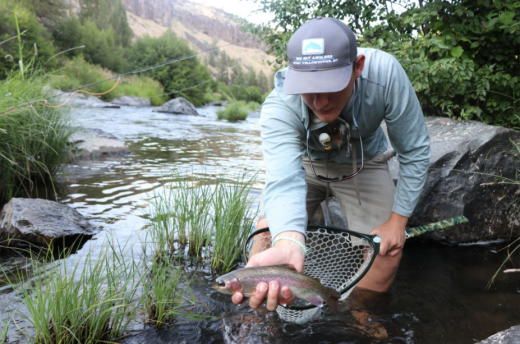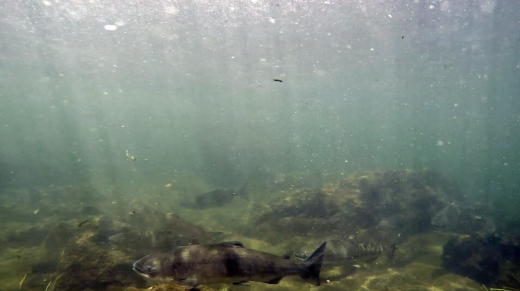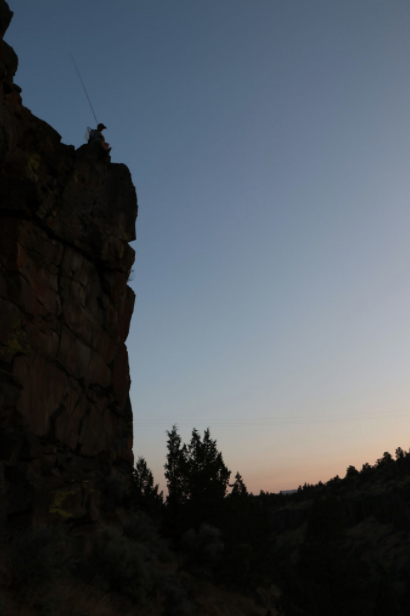Editor’s note: The TU Costa Five Rivers Program sent a handful of young anglers on fishing and discovery journey all across America in search of native trout. This installment focuses on Oregon’s Deschutes National Forest.
Location: Deschutes National Forest
The Deschutes National Forest stretches out across 1.6 million acres of Central Oregon. It provides a wide range of beauty, adventure, and recreational activities for those who visit. Activities change with the seasons, and the winter is filled with dense snow, ready to enjoy! Throughout the course of the summer months, the warmer weather opens up doors for tons of exploration – from hiking to fishing and everything in between. The Deschutes River runs through Deschutes National Forest and is filled with the native species, Redband rainbow trout. The Deschutes River is very accessible for water sports such as float trips, kayaking, paddle boards, and so on. Overall, the Deschutes National Forest truly does have it all, and showcases its beautiful state in a great spotlight.
— Heather Harkavy
Native Trout:
 Columbia River redband trout
Columbia River redband trout
Recognized as a distinct lineage, the Columbia River redband trout occupies only 45 percent of their historic range in the Pacific Northwest. Largely due to degradation and fragmentation of watersheds via land conversion, road construction, and natural resource development. Most of these activities occur at lower elevations, forcing some populations of redband trout to occupy the less-impacted higher elevations within the watershed. The most abundant population of redband trout occurs in the McKenzie River. Here, redband trout are also known as the McKenzie redband, redside, or rainbows. The most imminent threat to redband trout is the stocking of hatchery rainbows within the McKenzie River. This can result in hybridization between the two subspecies, reducing their ability to thrive within the aquatic system. Other threats for the species include dams, irrigation diversions, and road culverts that create fish passage barriers. In lower elevations of their range, smallmouth bass and brown trout are displacing redbands by outcompeting them for resources as well as directly preying on them.
 Pacific steelhead
Pacific steelhead
Similar in appearance to redband trout, steelhead are the anadromous form, as in they migrate to the ocean to forage and grow and then return to their natal streams to spawn. Steelhead are most threatened by warming water temperatures in many watersheds within their historic range. These warming waters can create thermal barriers during migration runs that put extra stress on the migrating steelhead. In addition to thermal barriers, physical barriers are another major threat. Due to the extensive migratory routes of many steelhead populations, they require connected watersheds. Hatchery stocking of steelhead poses another issue. Hatchery stocks can threaten the genetic integrity of wild steelhead populations and pose risks with hybridization between the two groups.
Coastal cutthroat trout
Coastal cutthroat are native to an extensive reach along the Pacific Coast, stretching all the way from California up into Washington, British Columbia and Alaska. The life history of this species can vary. Coastal cutthroat trout can remain as non-migratory resident freshwater fish, fluvial freshwater trout that migrate within a freshwater system, adfluvial forms that migrate between lakes and tributary streams, and anadromous forms that migrate out to the ocean and back. Instead of lengthy oceanic migrations, coastal cutthroat often utilize estuaries and other near shore environments before making their way back into their natal streams. Coastal cutthroat have been found to be more sensitive to warming water temperatures and are especially susceptible to the thermal barriers that are being found in some of their historic watersheds in the Pacific Northwest. Other issues for coastal cutthroat include poor forestry practices and poorly-designed and maintained roads that contribute to an increase in sediment loads in streams.
— Brett Winchel
Our Experience
Over the course of the trip, very few places and experiences were 100 percent new to me. However, the state of Oregon, along with its opportunities, proved to be exciting and different.
After arriving at our campsite along the Siletz River near the Oregon coast, we had the opportunity to meet up with Troy Rintz, a volunteer for TU. Right away, it was obvious that Troy knew the Siletz—and Oregon steelhead. He knew the character of the water, where the fish would be when, and what flies to use where. Troy drove us up the Siletz where we saw quite a few steelhead and chinook salmon holding in pools. It was interesting seeing a wild, ocean-going fish hanging out in only three feet of clear, cold water. Although our efforts at hooking a steelhead went without reward, the opportunity we had to snorkel with them was absolutely great.
It had been a while since I had last snorkeled, and it had been in Florida—a lot different than a cold and shallow river. Putting on a wetsuit is something I had never done, and I came to learn how hot and stuffy they can be on the hike down to the river. However, upon entering the river, the wetsuit was great to have. After putting on boots and tightening everything up, we were on our way downstream. Head first and belly down we went, being careful not to let all the boulders punch us in the stomach. Between sections of riffles and runs we would drop into pools—and this is where the best views were found. Upon dropping down into these pools, our eyes were treated to the green-pink flashes of steelhead, along with bronze flashes of monster steelhead. Seeing huge schools of migratory fish is a bit surreal. It is interesting to imagine where these fish have been on their long journey, let alone what they’ve seen across an entire ocean. Even seeing the coastal cutthroat trout dodging in and out of rocks to feed was special in a trouty way.
Sometimes when you’re in a new environment, it is hard to ask for a lot of results. I was completely outgunned when targeting steelhead, and I was never really able to target “the fish of a thousand casts” confidently. But even though a wild steelhead was never taken on the fly, being able to experience these unique fish for even a portion of their journey was nothing short of spectacular.
— Jacob Lacy



